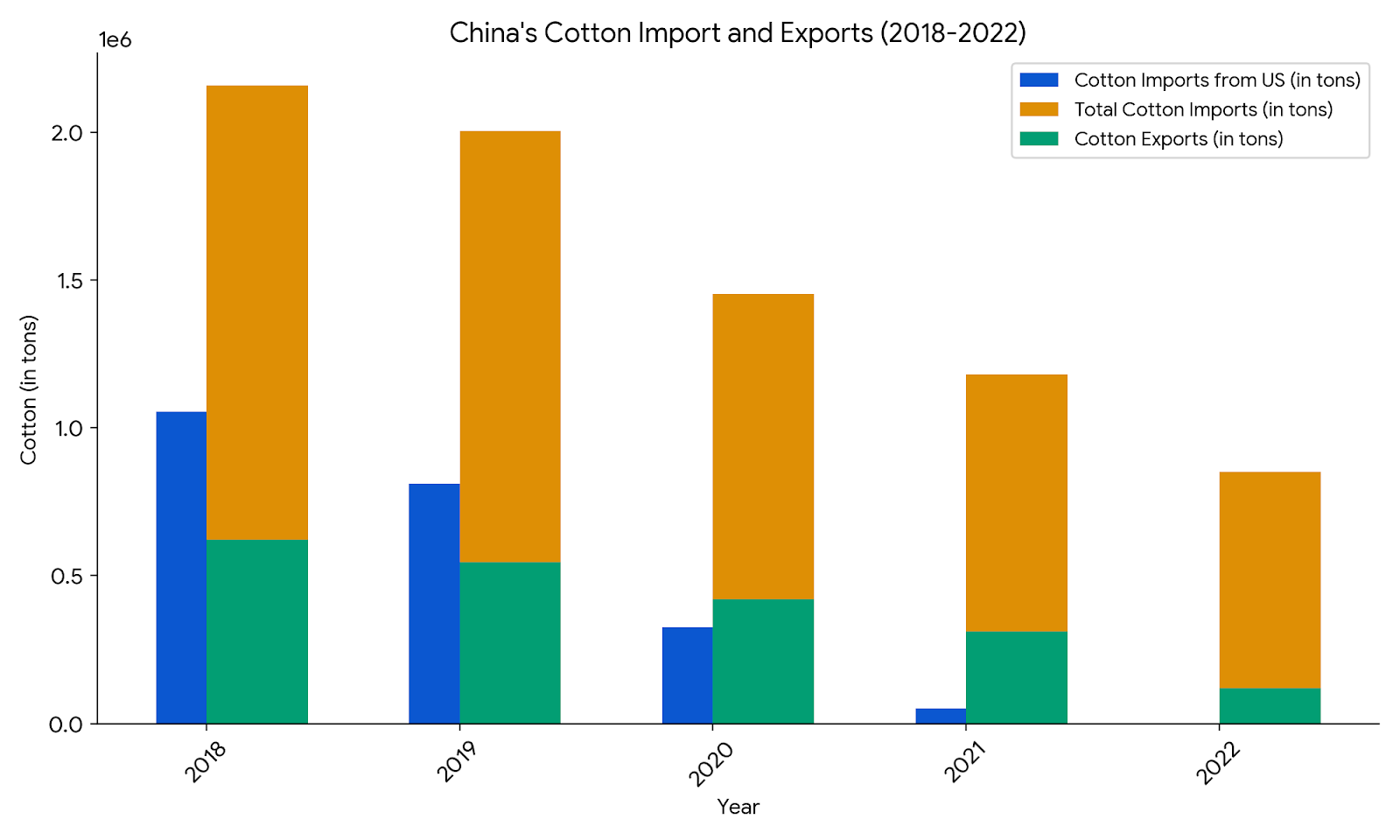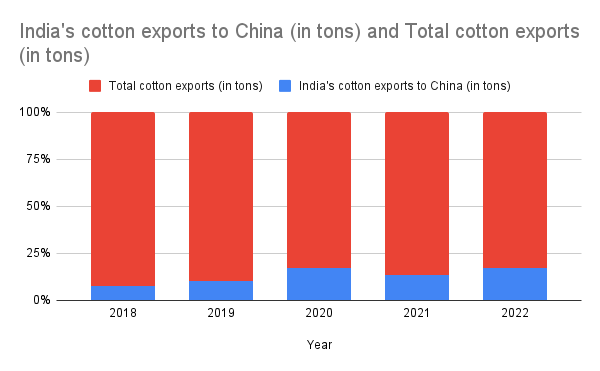Xinjiang cotton ban, reshaping China's yarn trade & India's emerging role
The US ban on cotton from China's Xinjiang region, implemented over concerns of forced labor, has sent ripples through the global cotton yarn trade, impacting China's exports and imports while opening opportunities for other supplier countries, most notably India.
The shifting landscape of China’s cotton trade
China, once a major importer of cotton from the United States, has seen a dramatic decline in imports from the US following the ban. The gap left by the US has been filled by other countries, with Brazil, India, and Australia emerging as key suppliers.
Table: China’s cotton import and exports
|
Year |
Cotton imports from US (in tons) |
Total cotton imports (in tons) |
Cotton exports (in tons) |
|
2018 |
1,054,000 |
2,158,000 |
622,000 |
|
2019 |
811,000 |
2,003,000 |
545,000 |
|
2020 |
325,000 |
1,452,000 |
420,000 |
|
2021 |
51,000 |
1,181,000 |
312,000 |
|
2022 |
1,000 |
852,000 |
121,000 |
The ban has also impacted China's cotton exports, as some international brands and retailers have become wary of sourcing cotton from China due to concerns about potential links to Xinjiang. This has led to a decline in China's cotton exports in recent years.
India, a beneficiary of the ban
India, the world's largest cotton producer, has seen a significant increase in cotton exports to China since the ban. The ban has presented India with an opportunity to expand its market share in China and strengthen its position in the global cotton trade.

Table: India’s cotton import and exports
|
Year |
India's cotton exports to China (in tons) |
Total cotton exports (in tons) |
|
2018 |
450,000 |
5,400,000 |
|
2019 |
520,000 |
4,600,000 |
|
2020 |
780,000 |
3,800,000 |
|
2021 |
950,000 |
6,200,000 |
|
2022 |
1,200,000 |
5,800,000 |
The US ban on Xinjiang cotton has had a profound impact on China's cotton trade, forcing a shift in sourcing patterns and creating opportunities for other cotton-producing countries, particularly India. The ban has also highlighted the complexities of global supply chains and the challenges of ensuring ethical sourcing practices. As the situation continues to evolve, it remains to be seen how the cotton industry will adapt to these new realities.

Mixed impact on other supplier countries
The Xinjiang cotton ban has also created opportunities for other cotton yarn supplier countries, such as Vietnam, Pakistan, and Bangladesh. These countries have seen an increase in exports to China, although to a lesser extent than India. However, the overall impact on these countries has been mixed, as they also face competition from India and other suppliers.
The US ban on Xinjiang cotton has reshaped the global cotton yarn trade, impacting China's import and export dynamics and creating opportunities for other supplier countries, particularly India. The long-term implications of the ban remain to be seen, but it is clear that it has had a significant impact on the industry and will continue to shape its future.
